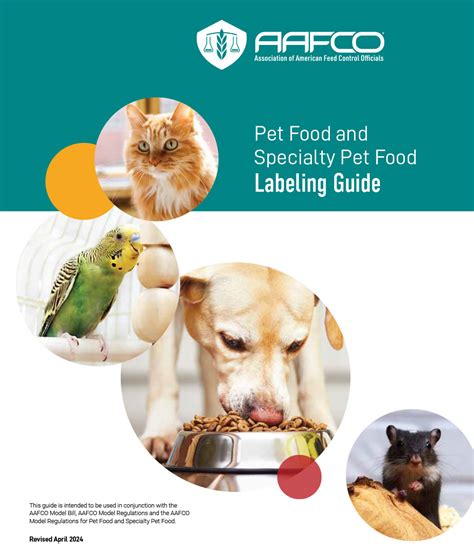Introduction
In the burgeoning pet food industry, the demand for natural ingredients continues to soar. Consumers prioritize products that mirror their wholesome diets, seeking nourishment that promotes their furry companions’ well-being. However, amidst this market expansion, the regulatory landscape surrounding natural pet food remains fragmented and evolving, leaving manufacturers and consumers alike navigating a complex maze. This article aims to elucidate the current state of natural pet food regulations and provide insights into the future landscape, empowering stakeholders to make informed decisions in the years ahead.

Current Regulatory Framework: A Patchwork of Definitions
Defining “natural” in the context of pet food has proven to be a contentious endeavor. Different jurisdictions have adopted varying approaches, resulting in a patchwork of regulations that can be confusing and challenging to interpret.
United States: The Association of American Feed Control Officials (AAFCO) has established guidelines for the use of the term “natural” in pet food labeling. According to AAFCO, natural ingredients must be derived solely from plants, animals, or minerals and must not contain synthetic additives. However, AAFCO’s guidelines are voluntary, leaving manufacturers with some leeway in their interpretation.
Canada: The Canadian Food Inspection Agency (CFIA) has a similar definition of natural ingredients, but it goes a step further by specifying that natural ingredients cannot be produced using genetic engineering or irradiation.
European Union: The European Union (EU) takes a more restrictive approach, defining natural ingredients as those that are “of animal or vegetable origin, unprocessed, or simply prepared.” This definition excludes ingredients that have undergone chemical or physical alterations, such as extraction or refinement.
Future Trends: Harmonization and Stringency
As the pet food industry continues to globalize, there is a growing recognition of the need for harmonization of natural pet food regulations. This effort is driven by both industry stakeholders and consumer demand for clear and consistent standards.
Several organizations are actively working towards harmonization. The International Organization for Standardization (ISO) has developed a draft standard for natural pet food ingredients. The Global Pet Food Safety Coalition (GPFSC) is also pursuing harmonization through its work with international regulatory agencies.
Despite these efforts, it is likely that natural pet food regulations will continue to evolve in the coming years. There is a growing trend towards stricter standards, as consumers become more discerning about the ingredients in their pets’ food. This trend is likely to be driven by the increasing prevalence of pet allergies and other health issues.
Benefits of Natural Pet Food Regulations
The implementation of robust natural pet food regulations offers numerous benefits for both manufacturers and consumers.
Consumer Confidence: Clear and consistent regulations enhance consumer confidence in the natural pet food market. Consumers can make informed decisions about the products they purchase, knowing that they meet established standards.
Product Innovation: Harmonized regulations provide manufacturers with a clear framework for product development. They can invest in new ingredients and technologies with the assurance that their products will meet regulatory requirements.
Reduced Risk of Fraud: Stringent regulations make it more difficult for manufacturers to mislead consumers by mislabeling products as natural. This reduces the risk of fraud and protects the integrity of the natural pet food market.
How to Benefit from Natural Pet Food Regulations
Manufacturers can capitalize on the benefits of natural pet food regulations by adhering to the following guidelines:
Follow Regulatory Standards: Comply with the applicable regulations in each jurisdiction where your products are sold.
Obtain Certifications: Consider obtaining certifications from independent organizations that verify the natural status of your ingredients.
Educate Consumers: Communicate the benefits of natural pet food to your customers and provide them with clear information about your products.
Common Mistakes to Avoid
Mislabeling Products: Avoid using the term “natural” on products that do not meet regulatory standards.
Using Synthetic Ingredients: Do not include synthetic ingredients in products that are labeled as natural.
Making False Claims: Do not make unsubstantiated claims about the health benefits of natural pet food.
Conclusion
Navigating the natural pet food regulations landscape requires a deep understanding of the current and evolving standards. Manufacturers that embrace transparency and adhere to best practices will be well-positioned to meet the growing demand for natural pet food. Harmonization efforts and the trend towards stricter regulations will continue to shape the industry in the years ahead, ensuring the availability of safe and nutritious products for our beloved companions.





















